One of Mara Elephant Project’s key elephant-saving components is our collaring program. Along with the help of our partners at Save The Elephants, we have 11 collared elephants that are closely monitored. Picking the perfect candidate elephants for these collars sometimes comes down to the level of danger for their lives; large bull elephants are at the highest risk of both poaching and human elephant conflict.
African bull elephants can live for up to 70 years and be as large as 15,000 lbs. Their ivory grows throughout their lifetime and can be worth a lot of money if poached. In addition to the poaching aspect of the complicated situation, there is also the human elephant conflict. Male bulls often crop raid local farms and with their size can wipe out an entire crop in one night’s time. These bull elephants learn that it’s an easy way to get food and then teach other generations of males to do the same. Farmers often retaliate against these bull elephants using poison spears to kill them thus eliminating the risk of losing their crops.
This is why bull elephants like Bobo are so important to collar and monitor. MEP collared Bobo 2 years ago and has continued to keep a continuous eye on him since. He was high risk because he was not only a large elephant with massive tusks, but also because he was a notorious crop raider. He was once a part of a large group of males roaming the Mara but in 2012, one of the deadliest years for elephants in the Mara, most of his herd were poached leaving just him and a few other now solitary large bulls.
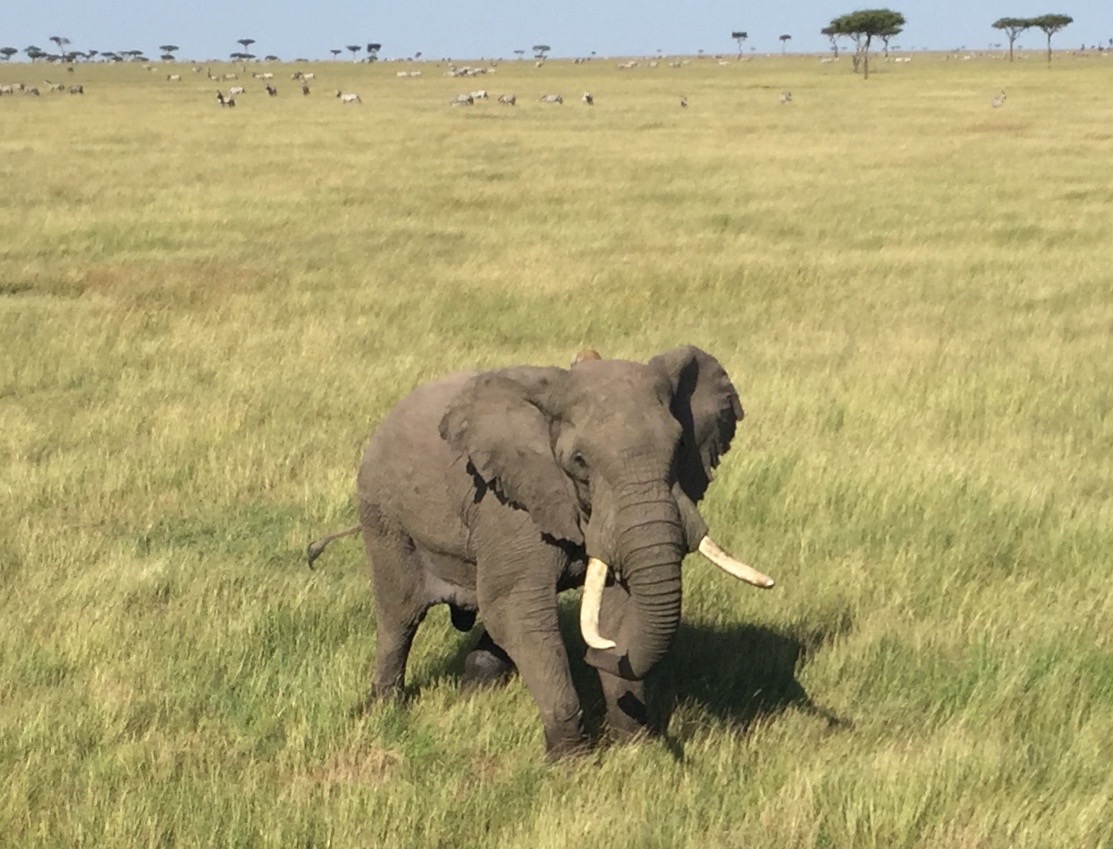 MEP’s constant monitoring of Bobo enabled us to deter him from crop raiding and intervene if he had already gone too far. We used our near real-time location monitoring to establish when he had crossed boundaries into farmland he was not supposed to be in. Ultimately, our goal was to usher Bobo into the Mara North Conservancy away from farmland and poachers but keeping a vastly roaming male elephant in one place is extremely difficult.
MEP’s constant monitoring of Bobo enabled us to deter him from crop raiding and intervene if he had already gone too far. We used our near real-time location monitoring to establish when he had crossed boundaries into farmland he was not supposed to be in. Ultimately, our goal was to usher Bobo into the Mara North Conservancy away from farmland and poachers but keeping a vastly roaming male elephant in one place is extremely difficult.
“There’s no way this guy would have lived this long without MEP.”Richard Roberts, MEP Co-Founder
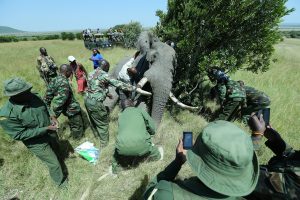 These difficulties came to a head during the second week of June when Bobo was treated by MEP and Kenya Wildlife Service for poison arrow wound obtained while crop raiding. The treatment was successful and even though we were monitoring his movements and trying to deter him, Bobo continued to crop raid.
These difficulties came to a head during the second week of June when Bobo was treated by MEP and Kenya Wildlife Service for poison arrow wound obtained while crop raiding. The treatment was successful and even though we were monitoring his movements and trying to deter him, Bobo continued to crop raid.
On the night of June 21 MEP CEO Marc Goss received an immobility alert on Bobo’s collar and his long-time fears for Bobo’s life were confirmed; Bobo was found dead that next morning from a poison arrow after a couple of days of confirmed crop raiding behavior.
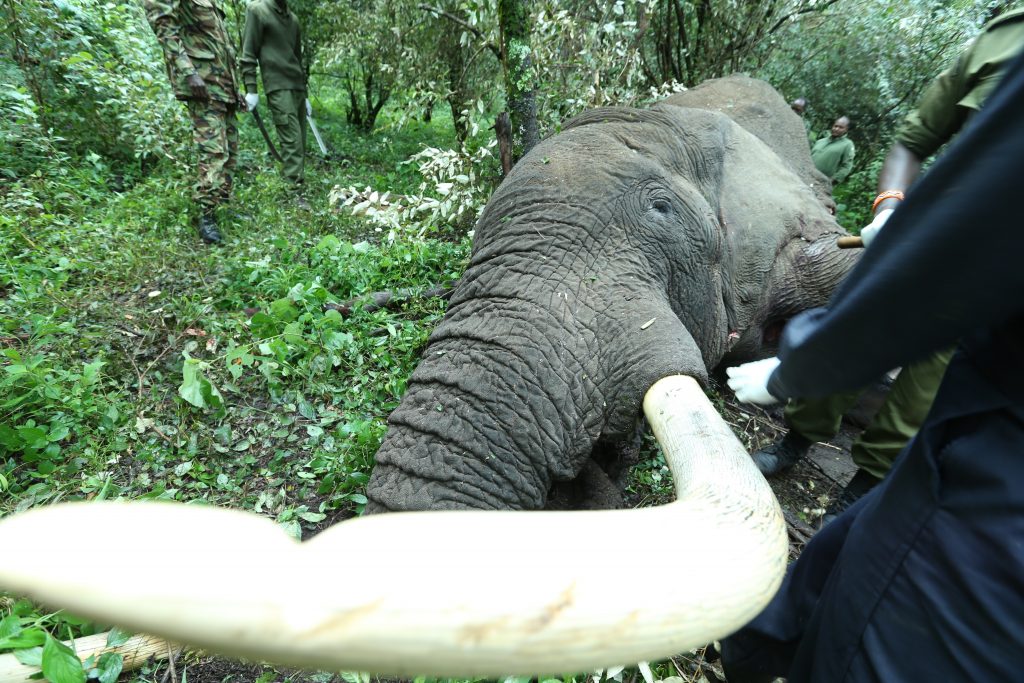
Conservation rangers from many different organizations came to see Bobo including the Kenya Wildlife Service, MEP and Transmara County as well as David Sheldrick Wildlife Trust vets all working together to make sure the investigation into Bobo’s death was executed properly.
“This is a sad day for us. We mourn the loss very profoundly.”KWS ranger
KWS Narok County Senior Warden Collins Omondi said that they would work tirelessly to bring justice for Bobo because, regardless of whether Bobo was crop raiding, killing an elephant is illegal. Once the autopsy was completed, KWS rangers took off Bobo’s tusks and secured them to ensure that the ivory doesn’t hit the black market and contribute to the illegal ivory trade. Bobo’s tusks weighed an astonishing 64.5 kg (142 lbs.) and were worth a staggering $64,000 street value.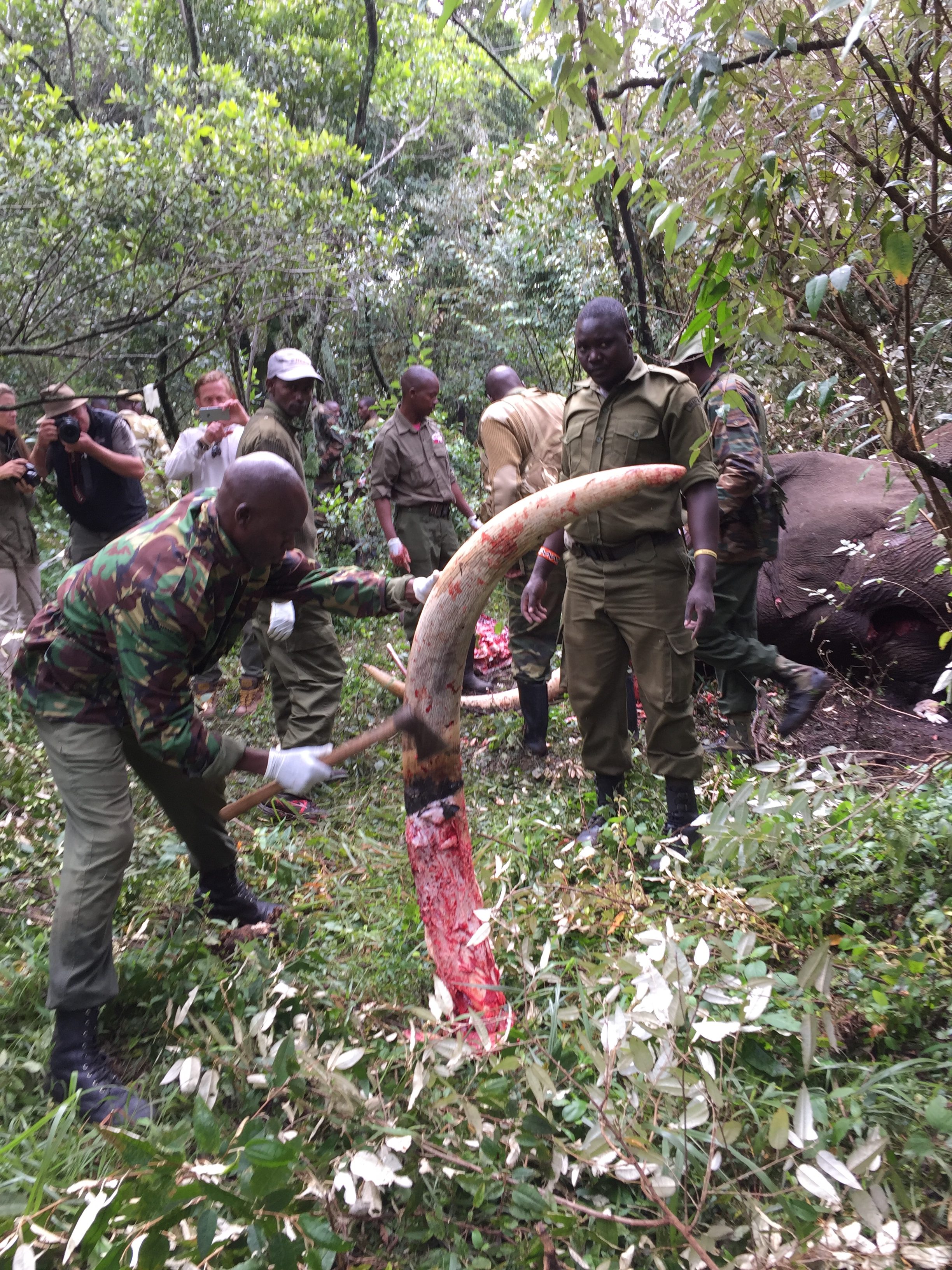
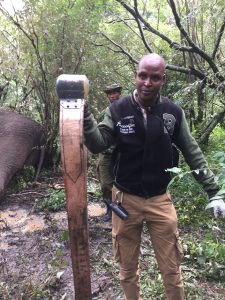
While MEP did everything they could to protect Bobo from poachers, we couldn’t prevent the human elephant conflict that was inevitable with a growing population of farms and a diminishing space for elephants. There is no clean and clear solution for high-risk elephants like Bobo. Several experts suggest more fencing and MEP is currently working with government officials to discuss this possibility, but in the meantime, collars, rapid response units and our helicopter are the only solutions MEP can offer to protect these magnificent bulls from poaching and conflict.
Though Bobo’s death is a setback, it is also a reminder that the work MEP does is truly life and death for this keystone species. Your support is essential to the continued mission of Mara Elephant Project to prevent poaching and human elephant conflict.
Please DONATE in the memory of the magnificent Bobo.


